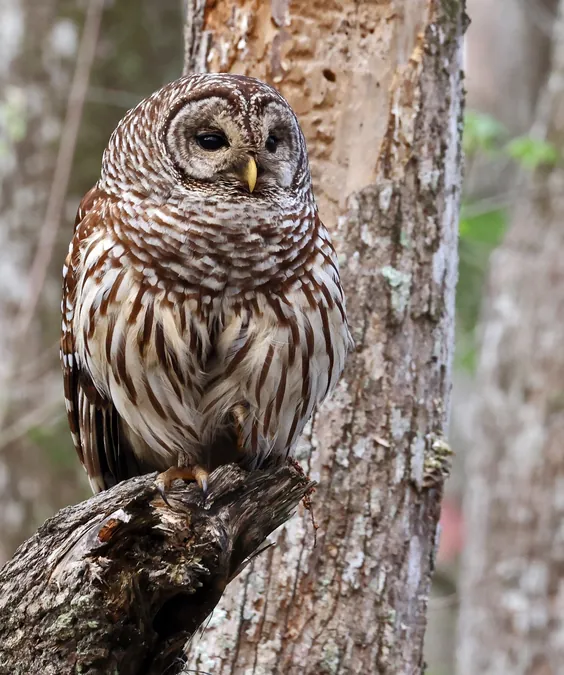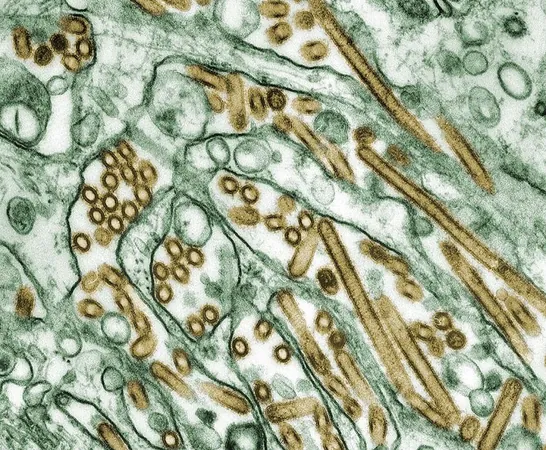
Shocking Insights: Barred Owls Thriving in Urban Spaces and What It Means for Our Cities!
2024-11-11
Author: Li
Introduction
Recent groundbreaking research published in *Ornithological Applications* has unveiled astonishing new insights into how barred owls (Strix varia) adapt to urban environments. This vital study, carried out by a dedicated team of biologists from Louisiana State University and partnering institutions, sheds light on the relationship between these majestic birds and urban landscapes, revealing implications that could drastically influence wildlife conservation and urban planning.
Eye-Opening Discoveries
1. **Day vs. Night Habitat Utilization**: Findings indicate that barred owls utilize significantly larger home ranges at night compared to the day. This suggests that owls have distinct habitat requirements for their feeding habits and rest. The researchers stress the importance of maintaining green spaces in cities, as these areas play a crucial role in supporting both nocturnal and diurnal wildlife.
2. **Energy Efficiency in Favorable Habitats**: The study found that barred owls encounter fewer energy expenditures when residing in their preferred nocturnal habitats. This points to better resource availability in these zones, which is vital for the survival and reproduction of these birds.
3. **Urban Wealth and Wildlife**: An intriguing revelation was the preference of barred owls for affluent neighborhoods in Baton Rouge. This phenomenon supports the “luxury effect,” showing that wealthier urban areas tend to harbor greater biodiversity. Such findings could challenge urban planners to rethink how green spaces are distributed across socio-economic divides.
Urban Design Ramifications
The study advocates for intentional designs that protect and enhance habitats for barred owls and other forest-associated species. It emphasizes the necessity for equitable distribution of green spaces within cities, ensuring that all citizens, regardless of their economic status, can benefit from the ecological services these environments provide.
A Broader Perspective on Habitat Needs
The researchers highlight a crucial aspect often overlooked in animal ecology—the need to study species over their entire 24-hour diel cycle. Understanding barred owls' behaviors during both active and resting phases offers a fuller picture of their habitat needs. This perspective is vital for designing effective conservation strategies that aid in the survival of urban wildlife.
The Unique Challenge of Capturing Owls
The research team confronted remarkable challenges in capturing barred owls, employing innovative tactics, including the use of a stuffed owl toy—affectionately named “Judas.” Co-author Dr. Vitek Jirinec explains the complexities they faced in luring the owls effectively, noting, “While Judas had some temporary success, we found greater success using recorded owl calls alongside large nets.”
Dr. Jirinec's experience was both rewarding and humbling, as he relates to the audience the physical challenges of working with these powerful birds. Once caught, the owls were fitted with advanced GPS and accelerometer loggers that allowed the researchers to track movement patterns and energy expenditures with remarkable detail.
Community Collaboration Amidst Challenges
Co-author Dr. Sabrina Taylor praises the collaborative spirit that made this study possible. “This project was a prime example of teamwork, uniting students, faculty, and community members in a shared effort to understand a species that is often overlooked in urban studies.”
Utilizing advanced technology, fieldwork, and a community-oriented approach, the research offered significant findings with the potential to reshape future urban designs in a way that accommodates both wildlife and human inhabitants.
Conclusion
This research not only deepens our understanding of urban ecology but also highlights the stark socio-economic disparities regarding environmental quality. As urban areas continue to expand, these findings remind us of our responsibility to create urban landscapes that nurture biodiversity and ensure equitable access to green spaces for all. Could this new research be the key to saving our city's wildlife? Only time will tell!




 Brasil (PT)
Brasil (PT)
 Canada (EN)
Canada (EN)
 Chile (ES)
Chile (ES)
 España (ES)
España (ES)
 France (FR)
France (FR)
 Hong Kong (EN)
Hong Kong (EN)
 Italia (IT)
Italia (IT)
 日本 (JA)
日本 (JA)
 Magyarország (HU)
Magyarország (HU)
 Norge (NO)
Norge (NO)
 Polska (PL)
Polska (PL)
 Schweiz (DE)
Schweiz (DE)
 Singapore (EN)
Singapore (EN)
 Sverige (SV)
Sverige (SV)
 Suomi (FI)
Suomi (FI)
 Türkiye (TR)
Türkiye (TR)